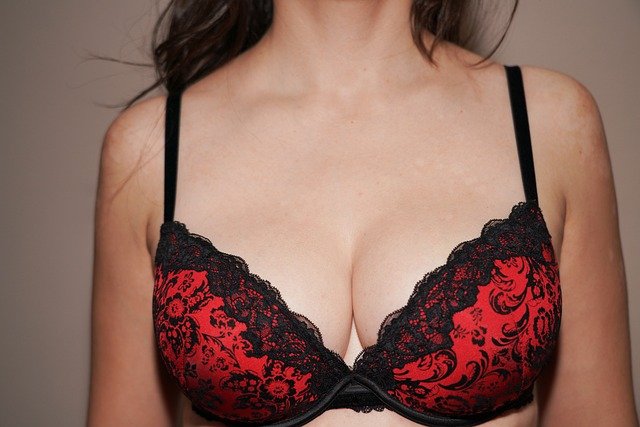Women's Underwear & Panties: 2025 Trends
In 2025, women’s underwear and panties are at the center of fashion innovation. From sleek everyday designs to bold statement pieces, this trend shows how lingerie is blending comfort, sustainability, and individuality. Discover the fabrics, styles, and colors defining the next wave of women’s intimate apparel.

What Key Lingerie Trends Are Shaping Women’s Underwear in 2025?
The dominant trends in women’s underwear for 2025 center around inclusivity, technology integration, and versatile functionality. Seamless construction has become standard rather than premium, with laser-cut edges replacing traditional seams to eliminate visible panty lines under form-fitting clothing. High-waisted styles continue their popularity surge, offering both nostalgic appeal and practical coverage that works well with contemporary high-rise bottoms.
Body-positive sizing has expanded beyond traditional ranges, with many brands now offering 15-20 size options compared to the previous standard of 6-8 sizes. Adaptive designs for women with disabilities or medical needs have also entered mainstream collections, featuring magnetic closures, seated-friendly cuts, and post-surgical considerations built into everyday styles.
How Are Panties Evolving With Modern Fabrics and Styles?
Fabric innovation drives much of the evolution in contemporary underwear design. Moisture-wicking materials previously reserved for athletic wear now appear in everyday panties, with many featuring antimicrobial treatments that maintain freshness throughout long days. Temperature-regulating fabrics using phase-change materials help maintain optimal body temperature, particularly beneficial for women experiencing hormonal fluctuations.
Smart textiles are making their debut in intimate apparel, with some experimental designs incorporating sensors that monitor health metrics like body temperature and stress levels. More practically, fabrics with enhanced stretch recovery maintain their shape after multiple washes, addressing a common consumer complaint about underwear longevity.
Style evolution includes the rise of boxer briefs for women, borrowed from menswear but adapted for female anatomy. These offer superior thigh coverage and prevent chafing while maintaining a sleek silhouette under clothing. Convertible styles that transform from full coverage to thong functionality through removable panels provide versatility for different outfit requirements.
Which Color Palettes and Cuts Are Defining Women’s Underwear Fashion?
Earth tones dominate the 2025 color palette, with sage green, terracotta, and warm beiges replacing the traditional nude, black, and white basics. These colors complement a wider range of skin tones while reflecting the broader trend toward natural aesthetics. Dusty pastels and muted jewel tones provide options for those seeking subtle color without bright intensity.
Cut innovations focus on problem-solving rather than purely aesthetic considerations. Hip-hugger styles sit lower on the waist without creating muffin-top effects, achieved through strategic panel placement and graduated compression. Brazilian cuts balance coverage with minimal fabric, while new “invisible” cuts use ultra-thin elastic and strategic seaming to disappear under clothing.
The revival of retro-inspired cuts includes updated versions of 1970s bikini styles and 1980s high-leg cuts, modified with contemporary fit technology. These nostalgic silhouettes appeal to both women who remember the original trends and younger consumers discovering vintage aesthetics.
What Role Does Sustainability Play in the Future of Intimate Apparel?
Environmental consciousness significantly influences underwear purchasing decisions in 2025, with sustainable materials becoming mainstream rather than niche. Organic cotton, recycled polyester from plastic bottles, and innovative materials like fabric made from eucalyptus pulp offer eco-friendly alternatives without compromising comfort or performance.
Circular economy principles appear in underwear design through take-back programs where brands accept worn-out underwear for recycling into new products. Some companies offer subscription services that deliver new underwear while collecting old pairs for proper disposal or upcycling.
Production transparency has become a selling point, with brands highlighting fair labor practices, reduced water usage in manufacturing, and carbon-neutral shipping options. Local production is gaining traction as consumers seek to reduce transportation environmental impact while supporting domestic manufacturing.
Why Is Underwear Becoming an Essential Part of Personal Expression?
Personal expression through underwear reflects broader cultural shifts toward authenticity and self-care priorities. Social media influence has made intimate apparel more visible and discussable, encouraging women to view their underwear choices as part of their overall style identity rather than purely functional items.
Customization options allow personal touches through embroidered initials, chosen color combinations, or fit adjustments based on individual measurements. Some brands offer quiz-based recommendations that consider lifestyle factors, body type, and personal preferences to suggest optimal styles.
The concept of “underwear wardrobes” has emerged, where women curate collections of different styles for specific activities, moods, or outfit requirements. This approach treats underwear as an investment in comfort and confidence rather than a basic necessity, leading to more thoughtful purchasing decisions and higher-quality product demand.
| Brand | Style Category | Price Range | Sustainable Features |
|---|---|---|---|
| Organic Basics | Everyday Essentials | $15-35 | Organic cotton, recycling program |
| ThirdLove | Size-Inclusive Basics | $12-28 | Sustainable packaging, inclusive sizing |
| Parade | Fashion-Forward Styles | $9-22 | Recycled materials, carbon-neutral shipping |
| Hanky Panky | Premium Lace Collection | $22-45 | Made in USA, quality construction |
| Girlfriend Collective | Athletic-Inspired | $16-32 | Recycled plastic bottles, transparent pricing |
Prices, rates, or cost estimates mentioned in this article are based on the latest available information but may change over time. Independent research is advised before making financial decisions.
The women’s underwear market in 2025 reflects broader societal values emphasizing comfort, sustainability, and individual expression. As technology continues advancing fabric capabilities and production methods become more environmentally conscious, consumers benefit from improved products that align with their values. The convergence of function, fashion, and environmental responsibility creates opportunities for women to make underwear choices that support both personal comfort and global sustainability goals.




